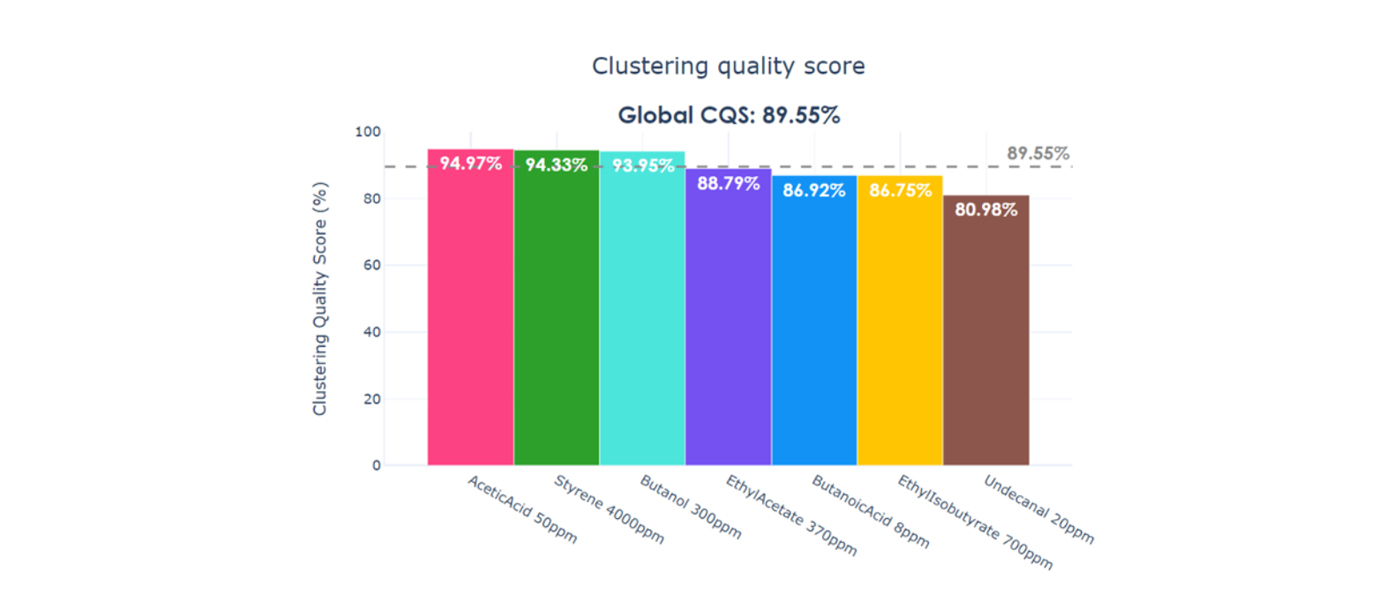Digital olfaction is gaining momentum as more industries realize the potential for objective odor data in their business. However, there is still a lack of defined performance characteristics of any sensor or technology aiming at detecting odors. While odor remains a subjective concept, leaders in digital olfaction are creating distinctions around how to gage total solution performance—one of these such metrics is the Clustering Quality Score, or CQS.
Historically, odor sensing performance was difficult to define and evaluate because there was no pre-existing reference for the absolute and widely accepted representation of odors. The adapted way of dealing with this has been to relatively compare molecules to molecules, or odors to odors. CQS provides the best total picture of the sensor’s ability to discriminate specific odors.
If we assume an odor has no variability, and the sensor to measure this odor is infinitely stable, the measure of this specific stable odor would always generate a signature as an identical point in the N-dimensional space of the sensor. All the recorded odors would be like punctual stars in a sky, separated individually, as below.

As reality is often variable or non-perfect, either due to the protocol of experiment, the odor preparation, or the measurement device itself, these “stars” become fuzzy spots when repeating for a short-term period what should be the same odor measurement. This increases the probability of overlap between odors and increases confusion, hence reducing the resolution, i.e. capability of separating odors. By representing this phenomenon with a numeric value—the Clustering Quality Score—we are able to quantify the degree of separability for these odor datapoints.

CQS allows us to “measure” the performance of a complete experiment, on a continuous scale (from -100% / very bad, to +100% / perfect). There are two different levels of CQS which are relevant to monitor:
- The Global CQS, the score representing the quality of the global separation, i.e. the complete partition. On a set of N different clustered odors, it is represented only by 1 CQS score.
- The Individual CQS, the score representing the quality of each individual cluster (which contains what is supposed to be identical measurements) among the other clusters. On a set of N different clustered odors, it is N different numbers.

The information conveyed by CQS can also be used to measure the repeatability and reproducibility of a technology by looking at records across multiple days for the same device (Repeatability) or by analyzing the score for multiple devices on the same day (Reproducibility).
Before assessing CQS, it’s important to characterize the signal-to-noise and limit of detection for a sensor as these are typical sensor performance metrics that are essential to any hardware evaluation. In addition, a sensor’s performance in these two areas impact the ultimate CQS scores.

